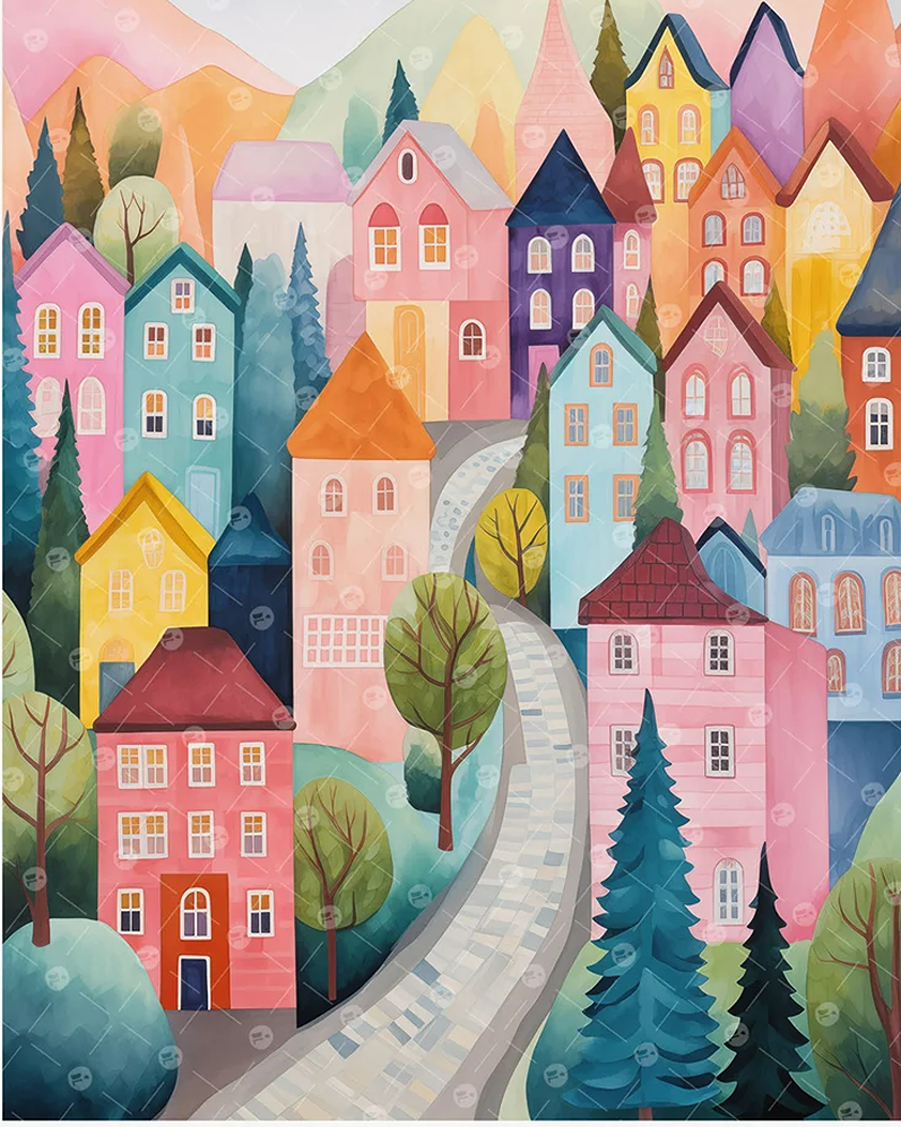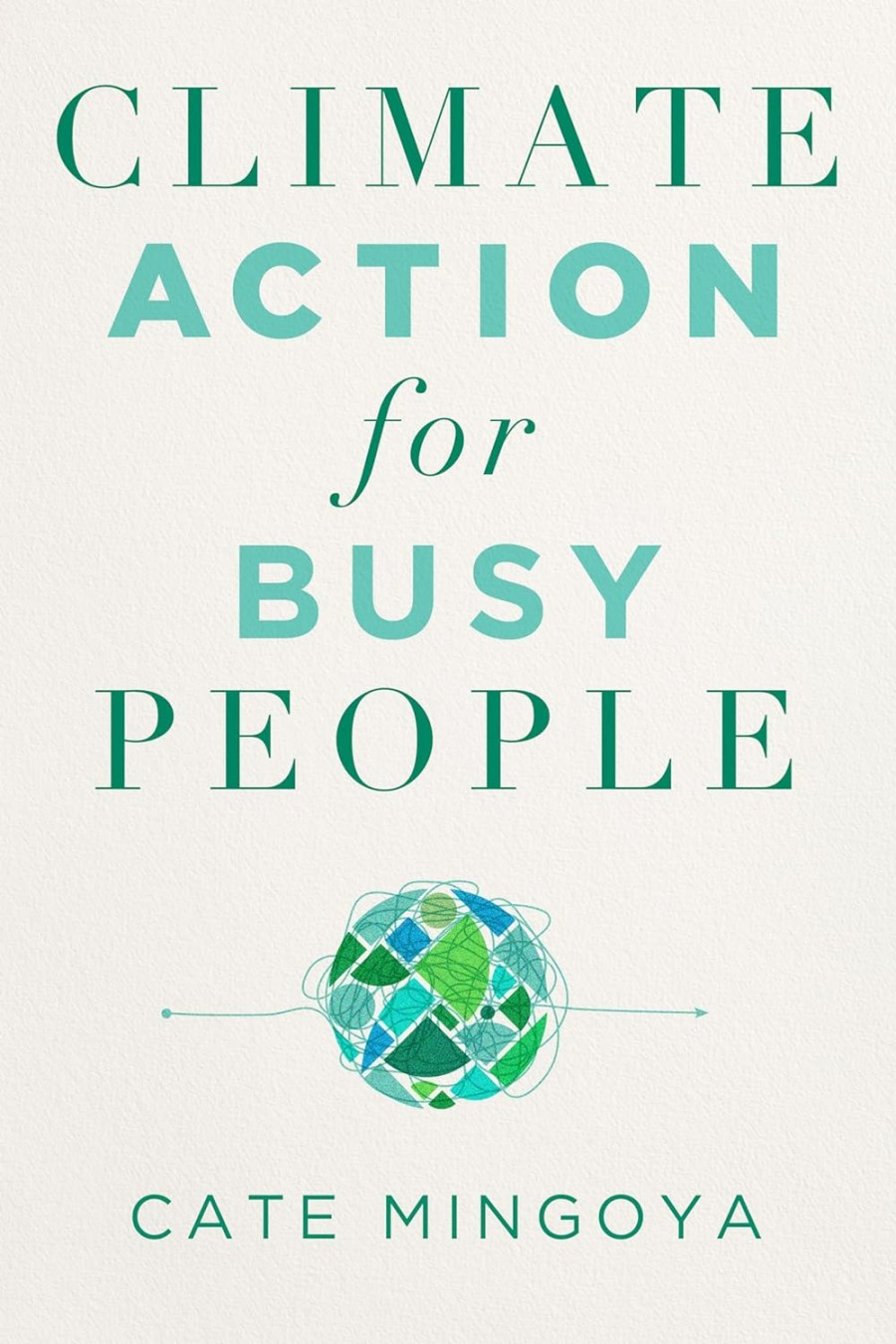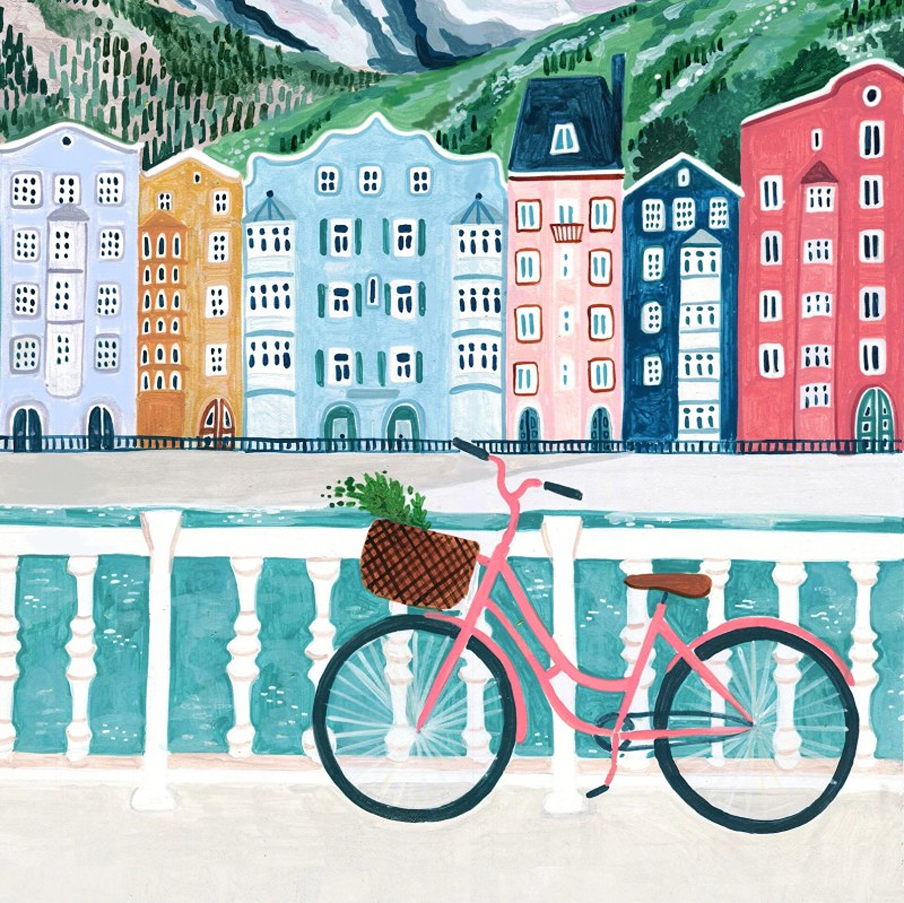
Although millions of people like to cycle in England, more are put off by bad town planning. It’s great to have bike rental stations, but it would be more helpful to place people and bikes above cars, when planning towns.
Safe Cycling in the City is a useful book for cyclists in in urban areas. It covers choosing the best bikes and clothes, and also covers road safety, braking, gears, and using extra power provided by electric bikes.
Elsewhere, town planners are light years ahead. The Netherlands and Denmark are two of the most cycling-friendly on earth (where nearly everyone commutes by bike – it helps that both countries are flat!) But even in car-centric USA, cities like Chicago have better bike lanes, and stations where commuters can park their bikes, use free tools to fix punctures and find shower in bike locker rooms.
Biking not only helps people get fresh air (if you’re not cycling through a polluted city) and exercise, but it helps reduce NHS bills (people get healthier and fitter). It also reduces road traffic (less pollution and accidents) and as bikes are gentler on roads, it means less potholes to fix. Yet most councils simply add a bike lane (which usually disappears into the road after a short while) and little else.
Both The Netherlands and Denmark have a ‘cargo bike’ culture where parents tend to use them to go shopping, placing children in the back. In Copehagen, the main street of Strøget is totally car-free and most people get around by bike (often due to very high fuel prices for cars). Denmark has even created a network of cycle super-highways, which offers safe routes for distances over 5km.
4 steps to safe cycling-friendly cities
The City Fix reports that over 40,000 cyclists die worldwide in road accidents, which is why it’s so important for cities to follow their steps to safer cycling cities:
- Build bike lanes in car-free zones. This is where England goes wrong. We have a few coloured bike lanes right next door to thundering lorries and buses, yet abroad bi-directional bike lanes (not safe next to cars) are built for exclusive use of bikes, not near vehicles. In the Slovenian city of Ljubljana, this has dropped carbon dioxide and noise levels substantially.
- Create bicycle boulevards. These are streets that give bikes more priority over cars, using methods to discourage cars (low speed limits, pavement markings). This has happened in the US city of Portland, where cyclists are always considered in town planning (it has 70 miles of bicycle boulevards).
- Use pop-up temporary bike lanes. If you have streets with lots of vehicles, it’s important to protect them with well-marked dedicated space, not just ‘a different colour path with a cycle lane sign). Using free-standing barriers is one way, but as noted above, these should only be one-way to reduce accidents. Berlin created 15.5 miles of pop-up lanes in a short time using bollards and signs. Ideally there should be a buffer zone between lanes (ideally for two cyclists to ride side-by-side).
- Use heavy-duty physical segregation. If you’re riding your bike next to a car, a quick swerve can knock you off. Progressive cities use bumpers, bollards, barriers and curbs so this doesn’t happen. These are made from heavy-duty plastic or flexible rubber, to avoid steel or concrete, which could injure.
bicycling-friendly cities support indie shops
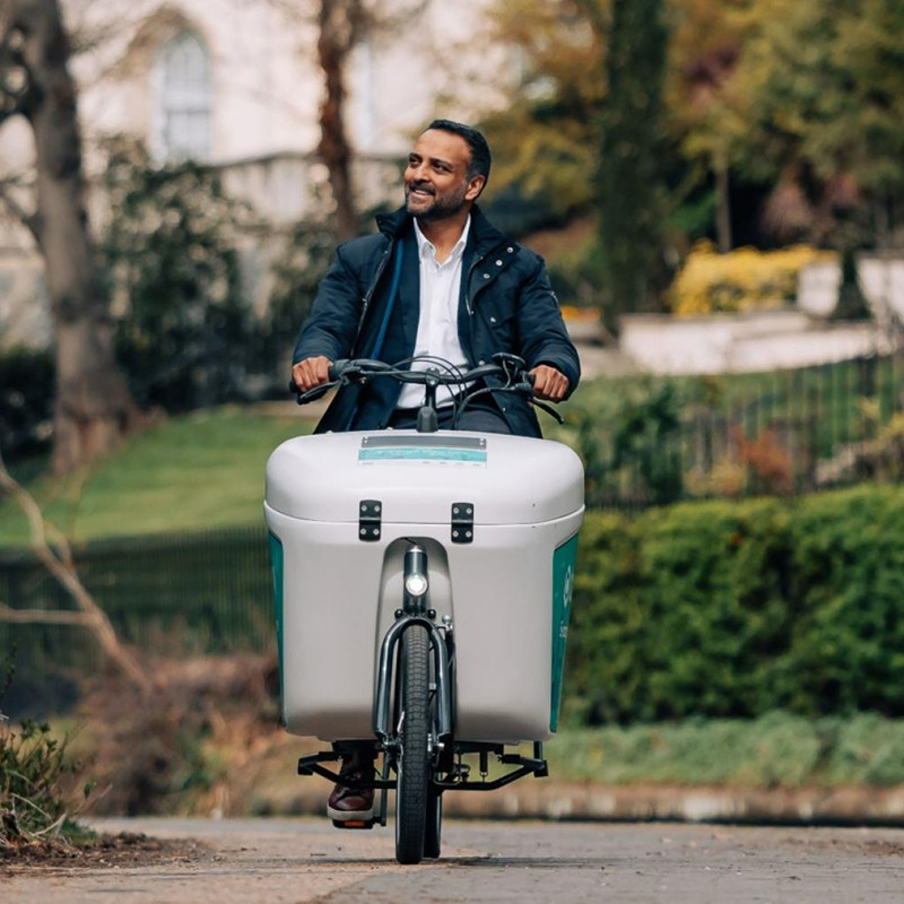
Another big advantage of good cycling-friendly town planning is that it encourages people to use cargo bikes to support independent shops, instead of driving out-of-town to big retail parks and supermarkets. If people can pedal to the local grocery, it keeps people, traffic and money within communities.
Beryl Hire offers rentable cargo bikes nationwide, along with e-bikes, e-scooters and manual brakes. The latter are very well-designed with adjustable saddles (to people under 5ft to well over 6ft) and brake lights that come on when you start pedalling, and remain on for 2 minutes after you stop (cyclists can also buy these online for personal use).
The most cycling-friendly city in England is Norwich (like Amsterdam and Copenhagen, it’s flat and a fairly dry climate). As a result, it enjoys a thriving culture of independent shops. Transport charity Sustrans has free downloadable guides on its website for town planners, including how to design safe cycling in cities.
two men who created cycling-friendly cities
Architect Jan Gehl is known as the man who turned the gridlocked city of Copanhagen into a pedestrian paradise, but he also made it cycling-friendly too. He did this over a few years, by gradually blocking certain roads to cars, adding more bike lanes, and providing rental bike stations and secure bike parking.
In Colombia, former mayor Enrique Peñalosa did the same in the former crime-ridden city of Bogotá. After being elected, he tore up the budget for building more roads, and instead used it to create cycle lanes and parks for local people. To this day, the city is car-free each Sunday, letting people walk or cycle without concern for car traffic.
how the city of Ghent puts bikes before cars

The city of Ghent is completely traffic-free in the centre for certain times of the day. You can drive (people in The Netherlands rarely ‘ban’ anything). But the system is designed, so that you have to use ring roads to get in and out of the city. So it’s so much of a faff, that most people choose to use public transport, and walk when they reach the centre. This is good town planning, thinking of pedestrians first over cars.
At most times, the only cars allowed are emergency vehicles. And before 11am and after 6pm, streets are open to public transport, refuse collectors, doctors and taxis (plus electric and cargo bikes). But during the day, it’s people and ambulances/fire engines/police cars only. People with bikes are also allowed, as long as they push their bikes by hand!
This city of around 100,000 people now has over 2 bikes per household, almost 20% less air pollution than other cities, hardly any traffic jams on outer roads (note to M25), far fewer traffic accidents and ‘the noisy opposition’ quietened down long ago!
a Dutch blueprint for cycling cities

Building the Cycling City is a super book by an American couple who have lived for years in The Netherlands, studying what makes this the most cycling-friendly country in the world. They then returned to North America and used their knowledge to implement findings in towns and cities, and now have put their extensive knowledge into a book. A birthday book for your town planner!
This book shows how The Netherlands realised that biking systems are more affordable, healthy and healthy for the planet, and so built a cycling culture where nearly everyone rides a bike. Compared to car-clogged nations elsewhere, where bikes are often seen as an afterthought. Detailing experiences in five Dutch cities and interviewing experts, learn how we can do what the Dutch have done.
Someone once said that the bicycle was the best ever invention, and they weren’t wrong. It’s one investment (a good bike should cost a few hundred pounds) and then it’s free to use, safe if you avoid bad traffic and get training, only needs a few accessories and good for your health. It’s no coincidence that two of the happiest nations on earth (Denmark and The Netherlands) travel everywhere by bike – it helps that both are flat! For hills, you could use an electric bike.
Go to a bike shop and buy a decent bike and the person can put it together, test the brakes and teach you the safety info you need. You’ll also need a good lock, bell and bike insurance/breakdown cover. Read Back On Your Bike, a super book with info on how to be a cyclist again, even if the last time you cycled was a child. This real-world guide includes tips on safe riding, fixes and maintenance and ideal for the nervous new returning cyclist.
Bicycle City is another book inspired by the Netherlands, which did not become cycle-friendly until an oil crisis in the 1970s when people simply could not afford petrol. Now we can use their methods during the climate crisis. In this book a cycling expert looks at why bikes are the best way to improve our cities for a car-free urban future, with everything we need closeby. Electric bikes are also key, as are cargo bikes with electric assistance for families and freight deliveries. And new ownership models (like bike-sharing schemes) are making them easier to use, ushering in a new era of pedal-powered cities.
good bikes & accessories
Priority Bicycles (US) offers quality affordable bicycles for adults and children, which feature rust/greast-free carbon drive belts (no chains), internally-geared hubs , puncture-resistant tires and (mostly vegan) comfortable saddles.
Rydon (The Netherlands) makes solar-powered bike lights, to help keep you safe in misty or dark weather. Enclosed in thick metal (most bike lights are encased in plastic), it boasts over 300 Lumen in BOOST mode (as a comparison, the flashlight on an Iphone X is 50 lumen).
Babboe Cargo Bikes (The Netherlands) is the market leader for safe affordable bikes to carry children, dogs and shopping. With electric pedal resistance, if you don’t live somewhere as flat as Holland! Bikeworks offers unique bikes for children with special needs.
where to donate unwanted bicycles
Bicycles are brilliant, but if you no longer use yours, don’t see it languish in a garage or shed, it could be helping others to get around! Obviously make sure it’s safe, but some places accept bike parts of workshops (if the brakes don’t work, the mudguards may still be used!)
Bristol Bike Project takes not just bikes, but bike parts, and uses them to teach people how to build their own bikes at local workshops. The workshop also has free workspace so people can come along and do bike maintenance themselves, so bike parts are always welcome.
The Bike Project gives refurbished donated bikes to refugees, to help them to find transport and find or get to work. Just enter your nearest drop-off point to find where to donate.
ReCycle is one of the occasions when it’s good to send unwanted items to Africa (they don’t want our electronic polluting trash). But bicycles are good, because they provide free non-polluting transport to help people to get to work or school. Find a local drop-off if you have a bike in the garage doing nothing.
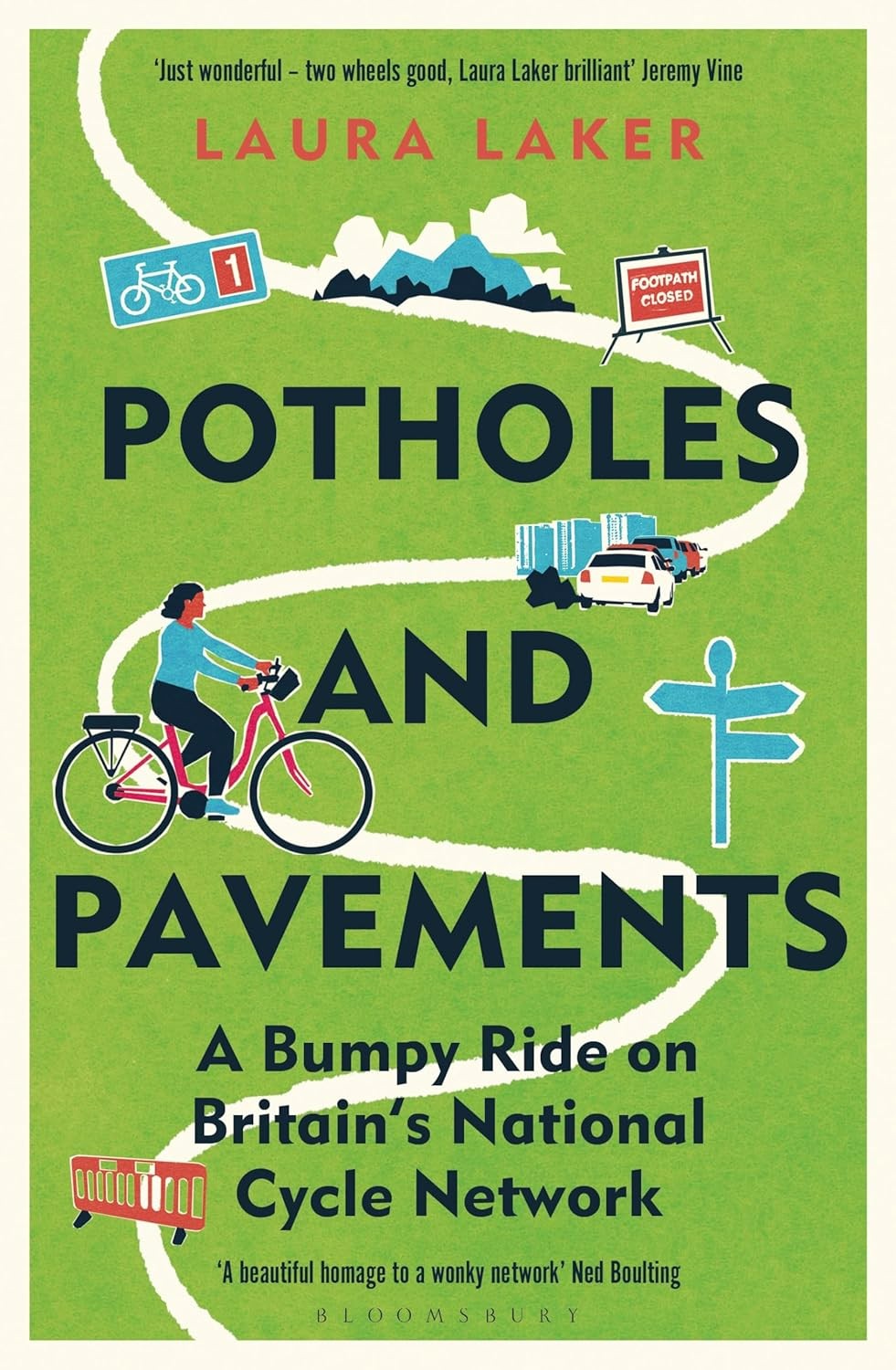
Potholes & Pavements takes us on a bumpy ride around Britain’s cycle network, imagining how we could cycle anywhere – the the next town or village. This was the dream of people in Bristol who created the now-13,000 mile cycle network. But this book lifts the lid on the faults of the route too that is patchy at best, as she explores the network from the Cairngorms to Cornwall and from the Pennines to the South Wales Coast. In a country where 71% of trips are less than 5 miles (and two-thirds of people would like to cycle more), it’s time to make that dream a reality.




